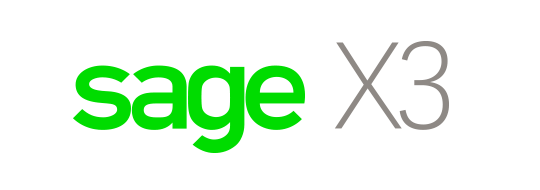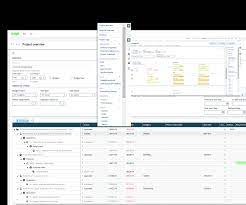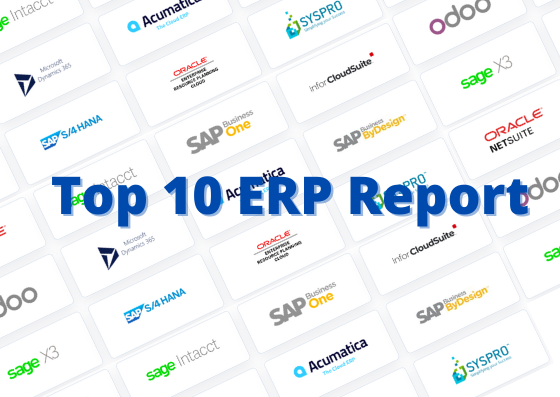
Sage X3 Finance & Accounting Module Overview
Sage X3, also known as Sage Business Cloud X3, is an Enterprise Resource Planning (ERP) solution that caters to mid-sized to large businesses. It offers comprehensive functionality across various business operations, including finance and accounting. Below is a detailed overview of the finance and accounting functionality within Sage X3:
-
General Ledger:
- Multi-Ledger and Multi-Currency: Supports multiple ledgers and currencies, catering to international business operations.
- Chart of Accounts: Create a structured chart of accounts for organized financial records.
- Financial Reporting: Generate standard and custom financial reports, such as balance sheets, income statements, and cash flow statements.
- Budget Management: Facilitate budget creation, allocation, and tracking.
- Journal Entries: Supports manual journal entries and automated entries for recurring transactions, with easy corrections or adjustments.
- Allocation Templates: Create templates for automatic allocation of revenues and expenses among departments, cost centers, or projects.
- Closing and Locking Periods: Control the closing of accounting periods and lock periods to prevent further entry or changes, ensuring data integrity.
-
Accounts Payable:
- Vendor Management: Manage vendor information, payment terms, and history.
- Invoice Processing: Automate the process of entering and paying bills.
- Payment Management: Issue payments through various methods and manage schedules.
- Expense Reporting: Track and manage expenses.
- Purchase Invoices: Import or enter purchase invoices, and match them against purchase orders or receipts.
- Payment Proposals: Generate payment suggestions based on due dates and payment terms.
- Vendor Analysis: Analyze vendor data, including historical data, outstanding invoices, and payment performance.
-
Accounts Receivable:
- Customer Management: Manage customer information, credit limits, and payment history.
- Invoice Generation: Automate invoice creation and dispatch.
- Payment Processing: Process payments received through various modes.
- Credit Management: Monitor and control customer credit.
- Sales Invoicing and Integration: Integration with sales module for automatic creation of invoices from sales orders.
- Dunning Management: Set up automated dunning procedures for overdue accounts.
- Customer Analysis: Analyze customer data, including payment performance, outstanding invoices, and historical trends.
-
Cash Management:
- Bank Reconciliation: Automate the bank reconciliation process.
- Cash Flow Forecasting: Forecast cash flow for informed financial decisions.
- Cash Position Reporting: Track the company’s real-time cash position.
- Bank Account Management: Manage multiple bank accounts with different currencies and maintain details, statements, and transactions.
- Petty Cash Management: Track and manage petty cash transactions and balances.
- Electronic Payments: Configure electronic payment methods such as EFT, ACH, and wire transfers.
-
Fixed Assets:
- Asset Tracking: Track assets, values, and depreciation.
- Depreciation Schedules: Automate depreciation calculation and maintain schedules.
- Asset Maintenance: Record maintenance activities and costs.
- Asset Categories: Define asset categories for classification and reporting.
- Disposal and Sales of Assets: Manage asset disposal or sale, and automatically calculate gains or losses.
- Asset Locations: Track physical asset locations and manage transfers.
-
Tax Management:
- Tax Compliance: Manage compliance across multiple regions and tax regimes.
- Sales Tax Automation: Automate calculation, collection, and remittance of sales tax.
- Reporting: Generate tax reports for local authorities.
- Tax Codes and Groups: Set up tax
codes for different types of taxes and group them for easy application to transactions. - Tax Reporting Templates: Use templates to streamline the generation of tax reports required by regulatory authorities.
-
Cost Accounting:
- Cost Centers and Profit Centers: Manage and allocate costs to different departments or business units.
- Overhead Calculation: Calculate and allocate overhead costs to products or services.
- Cost Analysis: Analyze costs for better decision-making.
- Activity-Based Costing: Implement activity-based costing to allocate costs more accurately based on activities that drive the costs.
- Standard Costing: Use standard costing methods to assess variances between actual and standard costs.
- Project Accounting: Allocate costs and revenues to specific projects for better financial tracking and analysis.
-
Financial Reporting and Analytics:
- Customizable Dashboards: Create custom dashboards to monitor key financial metrics.
- Advanced Reporting Tools: Access a suite of reporting tools for detailed financial analysis.
- Data Export: Export financial data to Excel or other formats for further analysis.
- Drill-Down Capability: Analyze financial data by drilling down to transaction-level details from summary reports.
- Key Performance Indicators (KPIs): Set up financial KPIs and monitor them through dashboards.
- Consolidation: Consolidate financial data across multiple companies or subsidiaries.
-
Compliance and Audit:
- Audit Trails: Keep track of changes made in the financial system for audit purposes.
- Regulatory Compliance: Meet various financial compliance requirements such as GAAP, IFRS, or country-specific regulations.
- User Permissions and Roles: Control user access to financial data and functions by defining roles and permissions.
- Compliance Reporting: Generate specific compliance reports such as 1099s in the US or VAT returns in the EU.
-
Integration:
- Seamless integration with other Sage X3 modules: Integrate with modules like manufacturing, supply chain, and human resources.
- Integration with third-party applications and services through APIs: Support integration with external tax management systems, banking systems, and other specialized financial tools.
-




